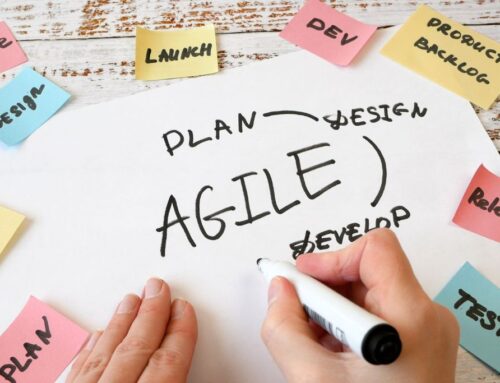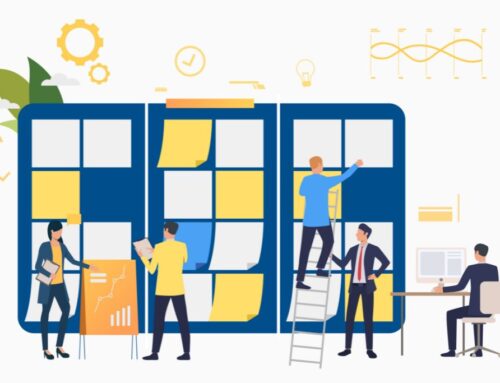In the business realm, agility has progressed well beyond its roots in software development over the past two decades, permeating various enterprise functions. From business process support and HR to administration, finance, and marketing, the Agile philosophy has found relevance and application in virtually all aspects of the modern enterprise.
As is the case with any business framework, the potential for scaling through Agile methodologies is an ongoing exploration. At Technoidentity, we’ve successfully leveraged Agile to implement complex, strategic enterprise-wide initiatives. These initiatives often require a synergistic approach involving business, software, and non-software departments, along with other enterprise functions, to realize strategic objectives.
However, this transformative journey has not been without its challenges, primarily falling into two categories:
- Defining agile for non-software teams: For fruitful collaboration between software and non-software teams, it is crucial to clearly articulate the concept and application of Agile at the outset.
- Embracing Agile: Hindrances to achieving true agility can arise from leadership’s failure to lead by example, lack of employee buy-in, low inter-departmental collaboration, and unclear accountability, all of which can impede the roll-out of enterprise-level strategic initiatives.
Our approach to successful organizational initiatives can be defined as:
- Role definition: Deciding on the roles to be dedicated for technical and non-technical individuals and teams
- Work plan: Calendar planning to receive commitments on the ad-hoc works
- Run Agile: Creation of backlogs and defining a creative process on the projects
- Scrum of scrum: Plan the key tasks and enhance visibility for teams and stakeholders for engaging and approving
- Team composition: Structuring cross-functional team collaborations
- Mindset: Continuous learning on Agile and design thinking approaches as these are crucial for organizing and recognizing the problems at the initial stages
- Sprints: Continuous engagements for tracking the progress of the individuals

The era of drastic, top-down enforced organizational changes is in the past. Today, change transpires gently and progressively, thereby creating an enduring impact with minimal disruption. Guided by this paradigm shift, we have adopted the Agile way to navigate the challenges mentioned above, reaping multiple benefits, including:
- Evolution and refinement of initiative vision: A continual cycle of inspection and adaptation enables the initiative vision to evolve and solidify, aligning it closely with changing business realities.
- Risk mitigation: The Agile methodology encourages early course-correction by favoring a minimum viable product approach over big-bang deliveries, significantly reducing the associated risks.
- Deeper stakeholder engagement: Regular feedback coupled with an established, synchronized rhythm enhances stakeholder engagement, paving the way for a collaborative and efficient work environment.
- Minimal governance overhead: Continuous coaching fosters self-organization, reducing the need for stringent governance structures. Simultaneously, the creation of network change agents ensures that the Agile philosophy permeates the organization.
Indeed, Agile is no longer confined to the realm of software development. Its principles of collaboration, responsiveness, and continuous improvement have proven to be beneficial across the enterprise. As organizations become more complex and interdependent, the ability to implement large-scale strategic initiatives in an Agile manner becomes not only advantageous but essential.
The task at hand is to continually explore and enhance the application of Agile principles across non-software functions and strive to create an organizational culture where Agile is not just a methodology, but a way of life. We must rise to the occasion, encouraging collaboration and breaking down silos, fostering a sense of shared accountability, and ensuring our leaders ‘walk the talk’ when it comes to embracing Agile.
While the journey towards a fully Agile enterprise may be laden with speedbumps, the resultant benefits—increased adaptability, enhanced stakeholder engagement, risk mitigation, and reduced governance overhead—make the path well worth traversing. Through patience, persistence, and a whole lot of Agile, large-scale enterprise initiatives can be successfully driven towards their strategic objectives.
In a rapidly evolving business landscape, Agile doesn’t just offer a competitive edge—it lays the foundation for a resilient, adaptive, and future-ready organization.


